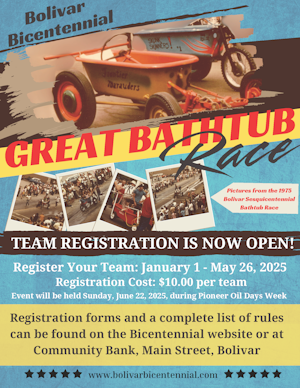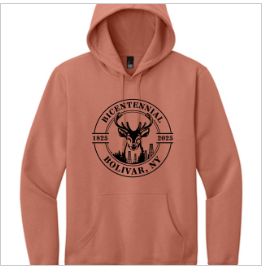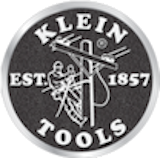Welcome to the Town of Bolivar Bicentennial Website
“Small Town, Big Pride”
“Small Town, Big Pride”

Find all of the latest Bicentennial Celebration announcements and updates here!
 Bicentennial Pickleball Tournament, Saturday, May 31st. Registrations is now open!
Bicentennial Pickleball Tournament, Saturday, May 31st. Registrations is now open!  Brothers of the Brush: Beard and Mustache Competition Registration is Now Open
Brothers of the Brush: Beard and Mustache Competition Registration is Now Open The Bathtub Race is returning! See Events for details.
The Bathtub Race is returning! See Events for details. Watch for information on an exciting spring event! Info coming soon!
Watch for information on an exciting spring event! Info coming soon!  Local artist Eric Jones will be carving a sand sculpture for POD 2025!
Local artist Eric Jones will be carving a sand sculpture for POD 2025! The Bicentennial Committee is hard at work planning events to celebrate the Town of Bolivar’s 200th Birthday! From exciting kick-off events to the big celebration in June, there will be fun-filled events and activities for all! Be sure to check here often to get all the details on upcoming events.


Get the Beard Contest Rules here

Get the Bathtub Race Rules here
The Chili-Cook Off and the Kick-Off Dance were a success! Thanks to those who participated – fun was had by all! Check out the event pictures below!
The Bicentennial Gala was held on February 1st at the Bolivar Country Club. It was a huge success! More than 100 people attended, all dressed in
semi-formal attire. Delicious food and drinks were had by all as they danced, socialized, and took crazy photos in the photo booth.
Another organization is making tentative plans to take over the event and hold it again next year. Thanks to all who helped make this such a
memorable evening. Check out some pics below!








A variety of Bicentennial items are available for purchase and all proceeds benefit Bicentennial events.
Visit our Bicentennial Store located at the Community Center on Main Street in Bolivar to purchase the following items.
Store hours: Monday- Friday from 9:00-12:00
The Bicentennial Store will be open additional hours for the Holiday Season! In addition to our regular morning hours, the store will also be open December 10, 13, 17 & 20 from 6:00 – 7:30.
If you are interested in visiting the store outside of those hours, please reach out to the Bicentennial Committee for assistance.









The Bicentennial Committee has partnered with White Imprints to bring you an amazing selection of Bicentennial apparel. Below are examples of some of the items available to purchase. There are many more options and colors available!
For a complete list of items, sizes, colors, and pricing please visit the
White Imprints Bolivar Bicentennial online
store
Happy Shopping!




We are immensely and sincerely appreciative for your contribution to the Bicentennial Celebration!

A project of the Bolivar Lions Club


Supporting Bolivar, Richburg, Little Genesee, and surrounding neighborhoods

A member of Lions Clubs International
"We Serve"

Joe and Betsy Bucher

Home page background image credit: Kyle Baldwin
Thank you to Gerald Bonney for his design work
Thank you to Eric Jones for providing a sand sculpture at Pioneer Oil Days 2025
A Brief History of the Bolivar Area
Bolivar Settlement History
• Early Native Americans used the Little Genesee Creek Valley
over thousands of years. The creek provided an important path as they traveled the countryside
looking for deer, a staple of their diets. The Oswayo Creek joined with the Little Genesee Creek
in Ceres, eventually reaching the Allegheny River in Portville, which was a major thoroughfare at
that time. These early people camped along the banks of the Oswayo in Ceres, while other groups
built hilltop settlements nearby.
• In 1819, Timothy Cowles and his two young sons arrived from eastern New York State and became
the first permanent white settlers of the Bolivar valley. Soon they cleared land, built a log house,
and carved a niche for themselves in the wilderness. Each year thereafter, more and more settlers
arrived, as word of the fertile soil, vastness of forests, and abundance of game, spread back home.
• By 1825, enough citizens lived near the confluence of the Root Hollow and Little Genesee Creeks
that they decided to form a town in newly-formed Allegany County. In February 1825, they selected
the name “Bolivar” to honor the then-living liberator of South America, General Simon Bolivar.
• For the next 56 years, the population of Bolivar seldom exceeded 160 hard-working residents.
These people made their livings as farmers, loggers, and tanners. They continued to carve fields
for their farm animals out of the ample forests as the settlement expanded.
The Oil Boom: 1881 - 1882
• On April 27, 1881, a huge oil gusher was struck in the
nearby town of Wirt. This was the “Richburg Discovery Well” which brought in over 400 barrels
per day, beginning the oil boom that forever changed the Bolivar valley.
• Within ten months of this oil strike, Bolivar became a boom town of 4500 excited oil seekers,
and combined with the population of nearby Wirt, the entire valley became home to up to 12,000
fortune seekers.
• During the oil boom, businesses exploded upon the scene in both Bolivar and Richburg. Among
other businesses, Bolivar had an opera house, ten real estate firms, 14 blacksmiths, ten oil well
shooters, three plumbers, six clothing stores, four meat markets, seven doctors, and eleven attorneys.
A similar list of businesses could be found up the road in Richburg.
• People were crazy with the thoughts of getting rich during the oil boom. In nearby Richburg,
wells were drilled all throughout the town, even on people’s garden lots. The small village
cemetery was surrounded by derricks. There was chaos, confusion, messy crude oil, noise, and
basic madness. The village leaders of Bolivar saw what was going on and passed ordinances to
prevent any oil wells from being drilled within the confines of the village.
• The oil boom in Bolivar resulted in the establishment of a telephone exchange in 1881.
At first there were few installations, but eventually more citizens had phone lines installed,
and with these lines arose more issues with “party lines.” Patrons had to wait for their
neighbors to finish their calls before they could use the line. A local oil producer complained
that he had to wait to call in an order for nitroglycerin for one of his wells – two housewives
were exchanging recipes for ginger cookies!
• By the end of 1882, over 7 million barrels of oil had been produced in the Allegany County
oilfield, mainly in the townships around Bolivar.
After the Boom
• Oil production slowed in the 1920’s, so a new recovery method
– “flooding” – was introduced. Flooding involved the injection of water into a well which displaced
and moved the oil in front of it toward a production well. Flooding caused oil and gas production
to soar to undreamed-of heights, and brought Bolivar into a newer and longer-lasting period of
prosperity.
• This much-needed wealth provided Bolivar with social and economic benefits not experienced by
most other communities. Public and private improvements sprang to life and soon our community was
one of the wealthiest communities per capita in New York State.
• In 1934, Allegany Refiners opened, producing 900 barrels of oil a day at one time. The local
oil fields produced mostly green crude oil with a lesser amount of black, which was more expensive
to refine. During the Great Depression, refiners refused to accept the black crude, so local oilmen
built the Allegany Refiners plant just outside of town.
• In 1941, the U.S. entered World War II. The federal government determined the oil industry was
an “essential war industry”. With this, workers were needed to continue their work in the oil fields.
While many local men entered the military, a many oil field workers were granted deferments when
requested by their employers. These individuals played a small, but vital, part of the American
petroleum industry that eventually produced 6 billion barrels of oil for the war effort.
• In 1946, the Pittsburgh, Shawmut, & Northern Railroad shut down. Later that year, the track
was pulled up by work crews. This forced the closure of Allegany Refiners which depended on
rail service for shipment of supplies and crude oil. When the refinery closed, Quaker State
purchased the black crude and ran it through its pipeline system to the refinery in Bradford.
• By the 1950’s, it was evident that the secondary recovery of oil (water flooding) had peaked
in effectiveness. Unfortunately, that era ended with a decline in oil production due to reservoir
depletion of the oil fields. Thereafter, several tertiary recovery methods were experimented with.
In an attempt to extract these remaining oil reserves, numerous methods used included CO2 injection,
in-situ combustion, steam injection, and chemical injection were tried. Some attempts were failures,
while others were successful, but they were not economically feasible.
• In 1960, hydrofracking was started in the local fields. This process utilizes fractures in rock
below the earth's surface which are then opened and widened by injecting chemicals and liquids at
high pressure. This technique was successful and helped the fields grow, especially the Alma Hill
Field. Bradley Producing Company of Bolivar played an important role in the local production.
History Tidbits
• Roller skating hit new
heights in 1884 with many towns having one or more rinks; Bolivar had three. One of the most
spectacular 10-hour skating races was held in May 1884 in the Bolivar Opera House in front of
a huge crowd. There were nine participants including many outstanding skaters from outside
the area with the winner receiving $100.
• The Western New York & Pennsylvania Traction Company was built into Bolivar in 1902 with
the first electric street car arriving in town from Olean on December 11 of that year. The
system was built here to serve the Allegany County oil field. As the use of automobiles by
residents increased, street car travel decreased. By 1926, the system was closed down.
• The first automobile in the Allegany oil fields was a Locomobile steamer owned by Erie
Wilson of Bolivar. The car cost $700, had wire wheels, and weighed 400 pounds. To settle
a dispute as to which was faster, the car or a horse, a race took place on July 4 on the
Bolivar race track behind the current high school. The car triumphed, but not without a
tight battle from the horse, winning by just a yard.
• The first motion picture theater in Bolivar, the “Dreamland,” opened its doors on Main
Street on February 17, 1909. It was open seven nights a week at 7:15 with motion pictures
changes on Monday, Wednesday, and Friday nights. Admission was five cents, and an advertisement
in the local paper described it as “A good moral place to spend your evenings.”
• In 1909, a vacant opera house lot at the corner of Main and Olean streets was purchased
as the site of a new public library. Andrew Carnegie, the well-known philanthropist, agreed
that if a site was furnished and a fund of $500 a year was approved for maintenance, he would
donate $5000 for building construction. The cornerstone was laid on June 15, 1910, and the
library opened to the public on January 7, 1911.
• The Bolivar Hotel opened on July 30, 1926. This business was the hub of the social scene
in Bolivar for many decades, hosting numerous bands and serving as a location for dinner and
dancing. The Hotel was also renowned for its food under the direction of Ken and Mary Stedman.
It became the hotspot for cocktails, dining, and dancing for Bolivar’s social scene.
• The Bolivar Central School District was formed in 1929 from portions of Bolivar, Genesee,
and Clarksville Townships. This consolidation mandated that a new central school be erected.
The three-story structure was built of fireproof materials, and the cost, including the site,
was more than a half million dollars. The building was first occupied on September 2, 1930,
and was rated as the outstanding Central School in Western New York.
• The Bolivar Country Club was organized in 1934 when a group of directors purchased
the 86-acre A.J. Hall farm along the Little Genesee Creek. The Hall farmhouse was easily
converted into a comfortable clubhouse. In 1945, the golf course opened to the public.
Originally a nine-hole course, many years later another nine holes were added to the course.
• On December 11, 1942, the worst fire in Bolivar in several years badly damaged the
Main Service Station warehouse and adjoining wash rack. The loss of the building and
contents (grease, motor oil, new tires and tubes, etc.) was estimated at over $10,000.
A Bolivar Central School bus stored there was destroyed; its cost was $6500 when new.
The manager, Harvey Chambers, was badly burned on his face and hands, as was employee
Harl Burdick.
• The Bolivar Bulldogs football program was a regional powerhouse many years ago. In 1948,
the team began a winning streak that would stretch all the way through the end of the 1952
season. The record during this time was 34-0-3. This period laid the foundation for many
years of exceptional Bolivar football that was to follow.
• In 1949, the widow of R.B. Moore, a highly successful oil producer, donated the family’s
swimming pool, rose garden, and property to the village. It was named “The R.B. Moore
Memorial Park” in honor of the former owner. For many years since, thousands of Bolivar
children have enjoyed cooling off in the popular village pool.
• On June 21, 1972, Hurricane Agnes slammed into this area bringing with it flooding and
devastation. The costliest hurricane to hit the United States at that time, the storm
dropped several inches of rain on ground that was already soaked from several days of
storms. Bolivar’s total rainfall over this period measured 11.7 inches. Water got
into the school causing NYS Regents exams to be cancelled, and it also damaged some
of the athletic fields. The bridge over Root Hollow Creek on Main Street was totally
destroyed.
• Youth sports took hold in Bolivar during the 50’s-60’s. The Bolivar Little League
began operations in 1956. From its first location, it later moved to the current site
of the youth baseball complex which contains a regulation field for the “majors” as well
as a smaller site for the “minors.” On an adjacent field, the Bolivar-Richburg Youth
Softball has its own separate playing facility at Shaner Field.
• The Bolivar Midget Football program first started in Ceres in 1959, moving to
Bolivar the following year. That highly-successful program has continued operations
with up to three divisions (midget, pony, pee-wee) as well as a cheerleading component
with the same three classifications. Hundreds, perhaps thousands, of local children
have found happiness in those organizations over the years.
• The 1950’s and 60’s exhibited a period of community growth and pride. The local
oil industry continued to provide prosperity for the local citizens. During this period,
the Bowl-O-Var Lanes bowling alley was opened on Main Street. The bowling alley provided
a source of entertainment for the townspeople, along with the Bolivar Hotel.
• In 1964, the New York State Oil Producers Association (NYSOPA) began plans for a local
museum to house NYS oil industry information and artifacts of historical value as well
as honor the men who had been pioneers in the oil/gas industry. Two main organizers of
the museum were Bill Hogan and Clarence (Mike) Schaffner, both of Bolivar. NYSOPA
contributed $1000 toward the creation of the museum and Bill Hogan donated use of a
building he owned on Main Street in Bolivar. On behalf of NYSOPA, the former Colegrove
and Wood Hardware Store was purchased for $2500 by Hahn and Schaffner.
• On June 21, 1972, Hurricane Agnes slammed into this area bringing with it flooding
and devastation. The costliest hurricane to hit the United States at that time, the
storm dropped several inches of rain on ground that was already soaked from several
days of storms. Bolivar’s total rainfall over this period measured 11.7 inches.
Water got into the school causing NYS Regents exams to be cancelled, and it also
damaged some of the athletic fields. The bridge over Root Hollow Creek on Main
Street was totally destroyed.
• By 1973, planning started for the Town of Bolivar’s Sesquicentennial to be held
in two years. Local residents Tom Manning, George Bradley, Art Burdick, and others
decided to refurbish the museum, hoping to open it up for visitors during the Sesquicentennial.
Many exhibits commemorating the area’s oil story were organized, and a large number
of old, irreplaceable photographs were displayed. The museum was a hit during the
Sesquicentennial, so plans were made to keep the building open on a limited full-time
basis in the future.
• In 1975 the Town of Bolivar celebrated its Sesquicentennial with a series of events
over the summer. Various activities helped commemorate the oil industry and its effect
on the region. The celebration concluded with a huge parade with some estimates of well
over 5000 people in attendance.
• With the success of the Sesquicentennial and the Pioneer Oil Museum, a new event
called Pioneer Oil Days began in the early 1980s. For several years, celebrations
included a working forge, a bit-dressing demonstration, and a competition between
“roustabout” teams. A few years after the original event lapsed, the Bolivar, Richburg,
Allentown, and Genesee (BRAG) Historical Society resurrected Pioneer Oil Days, expanding
it to a week-long celebration. After several years, BRAG decided it was time to hand over
the reins. In 2015, the Bolivar Lions Club picked up the Pioneer Oil Days event and
continues to run it as a week-long event each year.
• After years of discussions about merging neighboring school districts, in December
1993, Bolivar Central School and Richburg Central School district residents voted to
combine the schools into one. The combined district, Bolivar-Richburg Central School
District, took effect in July 1994. As a result of the merger, each campus received
updated facilities while the new district as a whole gained numerous program opportunities.
In 2003, the Bolivar-Richburg Early Childhood Development Center was built on Main
treet in Bolivar. This new district, and its subsequent changes and improvements,
has been an overwhelming success since its inception.
Notable Figures
• One of the most distinguished graduates ever from
Bolivar was Frank Gannett, a member of the Class of 1893. A graduate of Cornell University,
he soon began a writing career for several newspapers in New York State. Over the course
of his career, he acquired enough newspapers to form the Gannett Company, the largest U.S.
newspaper as measured by total daily circulation. In 1940, he ran for the Republican
presidential nomination, but was defeated.
• Rudy Vallee, a singer, saxophonist, bandleader, and entertainer, visited “The Hilltop,”
later known as Hilltop Lodge in 1930. A star of the day, his visit attracted a great deal
of attention from young fans who drove to Hilltop, the Messer Oil Company’s corporate retreat
and recreation camp.
• One of the finest professional baseball players of the early 1900’s was from Bolivar.
In 1903, Patsy Dougherty played for the Boston Americans, leading the entire American League
in the number of runs scored and hits. In the first World Series that fall, he hit two home
runs in one game against Pittsburgh, and from there, he went on to have a fine career as a
prolific hitter. Upon retirement, he returned to Bolivar where he worked for his older
brother as a clerk at the State Bank of Bolivar. He is buried in Maple Lawn Cemetery.
Email: bolbicentennial@gmail.com
 Find Us On Facebook
Find Us On Facebook
If you have questions or need help please contact us!
Bicentennial Committee Members
Kelly Lounsberry
Koko Nolan
Meghan Shaner Mitchell
Melanie Johnston
Norene Ferris
Sharon Johnson
Sharon Dimmig
George Bradley
Jerry Bonney
Bobbi Jo Baldwin
Chris Evans
Daniel Baldwin
Dave Herne
Deanna Worth
Jodi Adams
Jeff Margeson
Kelly Ingalls
Ryan Rockefeller